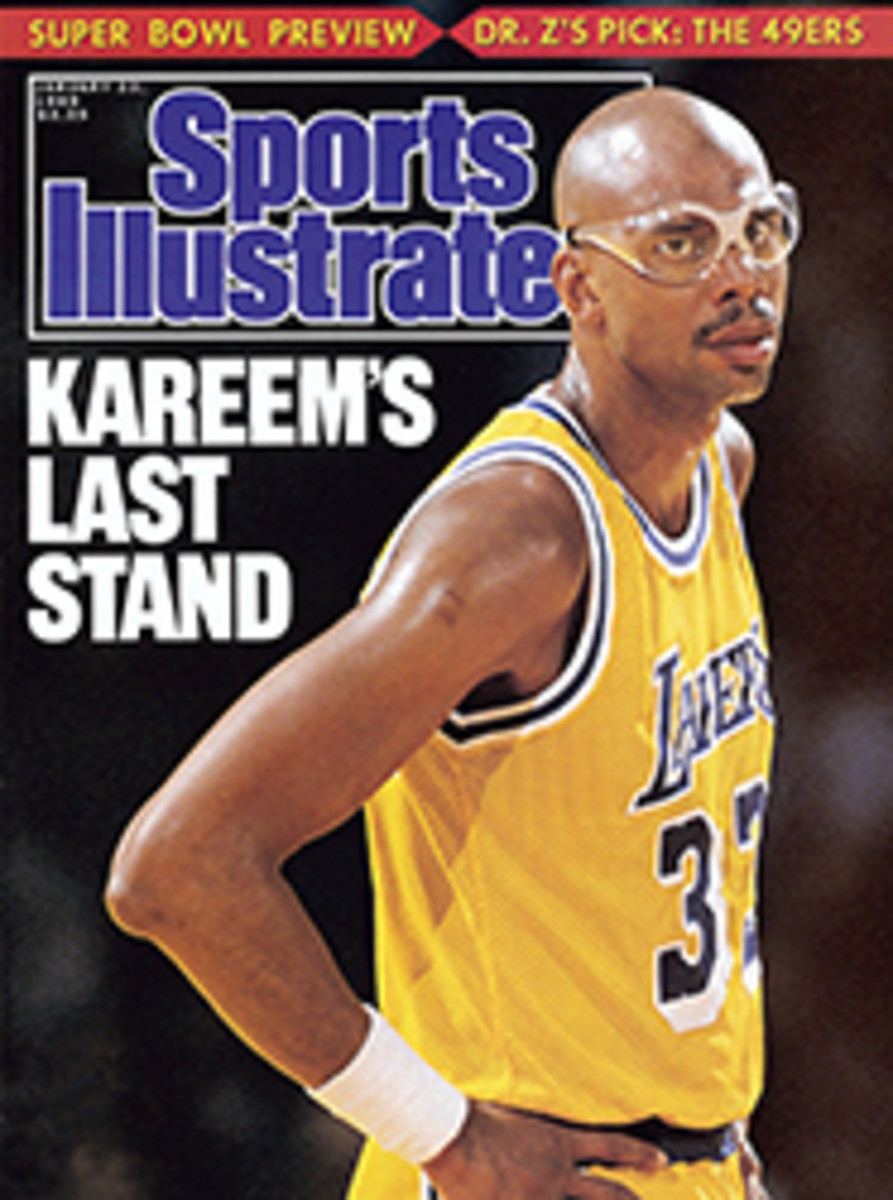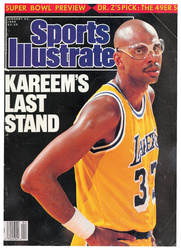
SCORECARD
CASTING A SHADOW
Baseball may well have to take action against either New York Yankee owner George Steinbrenner or Dave Winfield, his star rightfielder—or both—as a result of the latest charges being leveled by the two longtime combatants against each other. Both have filed lawsuits claiming that the other hasn't made contractually-agreed-upon donations to the David M. Winfield Foundation, a charitable organization that confers college scholarships and promotes antidrug education. But what's far more significant is that Steinbrenner has accused Winfield of loan-sharking and involvement with a gambler—charges that have cast a shadow, perhaps unfairly, on the integrity of Winfield and baseball.
Winfield opened the latest skirmish on Jan. 6 by suing Steinbrenner for the third time in seven years over unpaid contributions to the foundation. His suit charges that Steinbrenner, who under his contract with Winfield is required to contribute $300,000 a year to the foundation, owes it $450,000. Steinbrenner, who says he has been putting his contributions into an escrow account because of questions he has about the foundation's finances, countersued last week, charging that Winfield, who under the contract is supposed to donate $100,000 a year, owes the foundation at least $480,000.
Steinbrenner's lawsuit also accuses Winfield of making large loans at usurious interest rates to a gambler. Howard Spira, an associate of Winfield's late agent, Al Frohman, has identified himself as the borrower in question and claims Winfield charged him exorbitant interest on loans made in 1981 to help him cover gambling debts. Spira says Winfield threatened his life when he said he couldn't pay up in time. Winfield's lawyer, Jeffrey Klein, admits that his client lent Spira some money but vehemently denies the other charges.
Associations between players and gamblers presumably breach baseball rules prohibiting conduct detrimental to the game. However, the commissioner's office has reportedly known about Spira's allegations since 1987 and said last week that thus far no evidence has been presented "that would warrant commissioner action."
If Winfield was deeply involved with a gambler, he should be disciplined. If, on the other hand, the commissioner's office was correct in deeming the Spira charges insubstantial, and Steinbrenner knew that, the Yankee owner should be held accountable for airing the charges publicly and implying they are serious.
WHOSE BONE IS IT, ANYWAY?
Can a person own the rights to a football formation? Two Texans. San Antonio veterinary dermatologist James R. Smith and Austin writer Joey Lozano, say yes: With Lozano's encouragement Smith paid $10 to the U.S. Copyright Office in 1984 to register the I-Bone formation, which the two men claim Smith invented. And now they're considering suing the University of Colorado because, they say, the Buffaloes used the I-Bone this season without Smith's permission.
Smith and Lozano published an article about the I-Bone, a cross between the power I and the wishbone, in Texas Coach magazine in November 1984 after trying unsuccessfully to persuade several college coaches to try the formation. Smith and Lozano even put together an I-Bone playbook, but no college coach wanted to see it.
On Oct. 22 Smith and Lozano saw Colorado using what appeared to be the I-Bone in a televised 17-14 loss to Oklahoma. The Buffaloes were calling it the Power-bone. "We were floored," says Lozano. He and Smith wrote to Colorado coach Bill McCartney, volunteering to show him how to use the I-Bone more effectively, but that and a subsequent letter to Buffaloes offensive coordinator Gerry DiNardo went unanswered. Last week the two sent Colorado a letter threatening legal action if it doesn't acknowledge Smith as the inventor of the I-Bone.
McCartney says that he had never heard of Smith's I-Bone until recently; he claims he and his assistants devised the Buffaloes' offensive formation. It is unclear how well the copyright held by Smith would stand up in a lawsuit. He would seem to hold exclusive rights to the term I-Bone and perhaps to printed copies of the plays he and Lozano designed. But as for rights to use the I-Bone offense, Smith may be on shakier ground. "Game plays themselves are not copyrightable," says Julia Huff, an examiner in the U.S. Copyright Office. "They're considered ideas." What about formations? Might they fall into the same category as dance steps and choreography, which can be copyrighted? The Copyright Office is researching these and other sports-related questions, including whether or not to grant copyrights for certain aerobic-dance exercises.
"What do we have to do, name our offense after them?" grumbles Colorado sports information director David Plati of Smith and Lozano. The two Texans say only that they want to discuss the matter with the school.
A STEP TOWARD 1994
Until last week no U.S. national soccer team had advanced past the first round of an important senior-level international tournament since 1930. But at the first world championship for five-a-side football—a type of scaled-down soccer usually played indoors—the Americans finished third among 16 teams, along the way defeating soccer powers Italy, Argentina, Paraguay, Belgium and eventual champion Brazil. It was America's best showing ever in international soccer.
The performance prompted Arthur Walls, chairman of the U.S. Soccer Federation's Coaching Committee, to declare, "We've crossed a threshold." Opponents at the tournament, which was held in various arenas in the Netherlands, praised the strength, aggressiveness and teamwork of the Americans, as well as the outstanding play of the Los Angeles Lazers' goalie, A.J. Lachowecki, one of three players on loan from the Major Indoor Soccer League. Though the five-a-side game doesn't demand the same endurance and open-field skill as outdoor soccer, the U.S. performance showed that, as coach John Kowalski put it, "we can play with the big boys."
With the third round of 1990 World Cup qualifying set to begin in March and the '94 World Cup scheduled for the U.S., an American upsurge in soccer couldn't be better timed. The U.S. is still a long way from the top echelon of outdoor soccer, but last week's performance brought with it a new measure of respectability. Said veteran MISL defender Doc Lawson, "This will stay with me the rest of my life."
A LITTLE MILESTONE
Carl Yastrzemski, who was elected to the Baseball Hall of Fame last week along with Johnny Bench, is the first former Little Leaguer selected to the Hall. An estimated 20 million youngsters have played Little League baseball since its inception in 1939, and about 1,000 of these have reached the major leagues (the first was pitcher Joey Jay in '53). But because Little League ball didn't gain widespread popularity until the early '50s—Yaz played in the South Fork Little League in Bridgehampton, N.Y., from '48 to '52—only recently have graduates been coming to the end of their big league careers. Other former Little Leaguers who may soon end up in Cooperstown are Gaylord Perry, who fell 32 votes shy of election in last week's voting (page 78), and Nolan Ryan and Mike Schmidt, who are nearing the end of their careers.
Coincidentally, this year is the 50th anniversary of both the Baseball Hall of Fame and Little League baseball. And on Aug. 22, the opening day of the Little League World Series, Yaz will turn 50.
DOING LUNCH
Houston Oiler general manager Ladd Herzeg and one of his most outspoken critics, Houston Chronicle sports columnist Fran Blinebury, tried to patch up their differences over lunch at a posh restaurant in Houston last week, but the meal ended regrettably, with Herzeg hitting Blinebury twice in the face, blows for which Herzeg later apologized. The lunch's all-too-revealing bill—which came to more than $1,300 and was paid by Blinebury—showed that the two men had consumed six bottles of Cristal champagne ($135 apiece) and one bottle of Dom Perignon ($105) during their five-hour t‚Äö√†√∂‚Äö√ë¢te-à-t‚Äö√†√∂‚Äö√ë¢te.
Quipped editor in chief C. David Burgin of the rival Houston Post, "We urge Post columnists to order Dom Perignon '66, an exquisite vintage. It's more expensive [$800 a bottle], but it's a kinder, gentler champagne, far more cerebral and less likely to provoke contretemps."
ILLUSTRATION
PATRICK McDONNELL
PHOTO
COR VOS
Forward Peter Vermes led a surprisingly strong U.S. attack with a team-high six goals.
THEY SAID IT
•Danny Cox, St. Louis Cardinals pitcher, bemoaning the $600,000 a year he draws from the Cards: "Hopefully, I'll get a lot of wins and some big bucks out of them in the future."
•Dave Stockton, pro golfer, criticizing the Poppy Hills Golf Course in Pebble Beach, Calif., for being unreasonably tough: "Even the men's room has a double dogleg."

